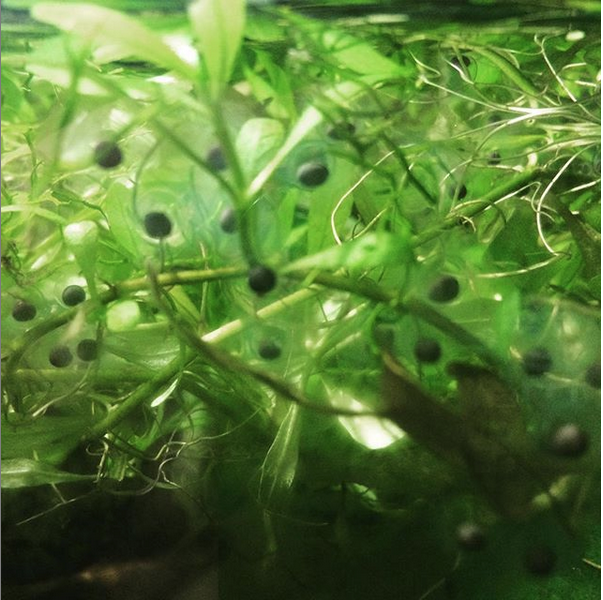
Selecting a female
Female axolotls can lay up to 1000 eggs at once, which is exhausting for the female. She does not get a break to recover afterwards — her body immediately resumes gamete production, which comes with a high energy cost. For this reason, repeatedly beeding a female can be detrimental to her health. Breeding her too early can also interfere with her growth. Please be mindful of these considerations when choosing a female to breed — choose a female who’s fully grown (at least a year old) and has a healthy appetite and appearance, with a big round belly. Keep in mind that the same female should only be bred a maximum of three times in her lifetime, with a long break in between breedings. Personally, I try to breed females only once, unless they have exceptional characteristics. I also never breed females more than once a year.
Selecting a male
When it comes to choosing a male, the most important thing to consider is genetics. You’ll want to make absolutely sure that your male has no family relation with your female — this would lead to genetic defects in the offspring that can be quite dramatic. Beyond that, it helps to be familiar with how genes combine to create different morphs (phenotypes). Personally, I like to select males with traits that match the female’s best characteristic: for example, my “K” line is all about cute round faces, whereas my “B” line is all about blue gills.
Traits to avoid
You should never, ever breed axolotls with obvious genetic defects, such as:
- dwarfism [article coming soon!]
- short toes syndrome
- “mini” features
- any physical deformation that isn’t due to regrowth after nipping
- a tendency to float frequently (especially upside down)
- other recurrent health issues (e.g. very prone to fungus)
In case of accidental breeding
If you’ve accidentally kept a male and a female together and ended up with eggs, it may seem like the kind choice to keep them and raise them… But in reality, it’s the self-indulgent route that should be avoided in most cases. If the two parents are genetically related (e.g. brother and sister), or if one or both parents have genetic defects, you really wouldn’t be doing the larvae a favor by attempting to raise them. Not only would it compromise their quality of life, but it also poses a risk that the genetic issue will be passed on to future generations if those axolotls also end up getting bred (accidentally or otherwise).
Avoid this rookie mistake!
Another important point to consider is: how many of the eggs can you afford to keep? Raising larvae requires time, effort and space. They are also complicated and expensive to feed, compared to adults. If you are breeding axolotls for the first time, I wouldn’t recommend keeping more than 10. If you keep more than you are able to care for, you will be stretching your resources thin, and the quality of your care will suffer. Trust me — don’t try raising hundreds of axolotls on your first try. You have plenty of time to try your hand at raising more after you’ve brought these first 10 to maturity. You’ll be better prepared to tackle higher numbers once you have a clear idea of the challenges involved.
How to get rid of unwanted axolotl eggs
Freeze them. This will cause the larvae to go into hibernation mode, dulling their sense of pain before vital functions shut down. They will be unconscious before ice crystals begin to form. Once they are frozen solid, you can dispose of the eggs in the compost or trash.
Happy responsible breeding! : )
